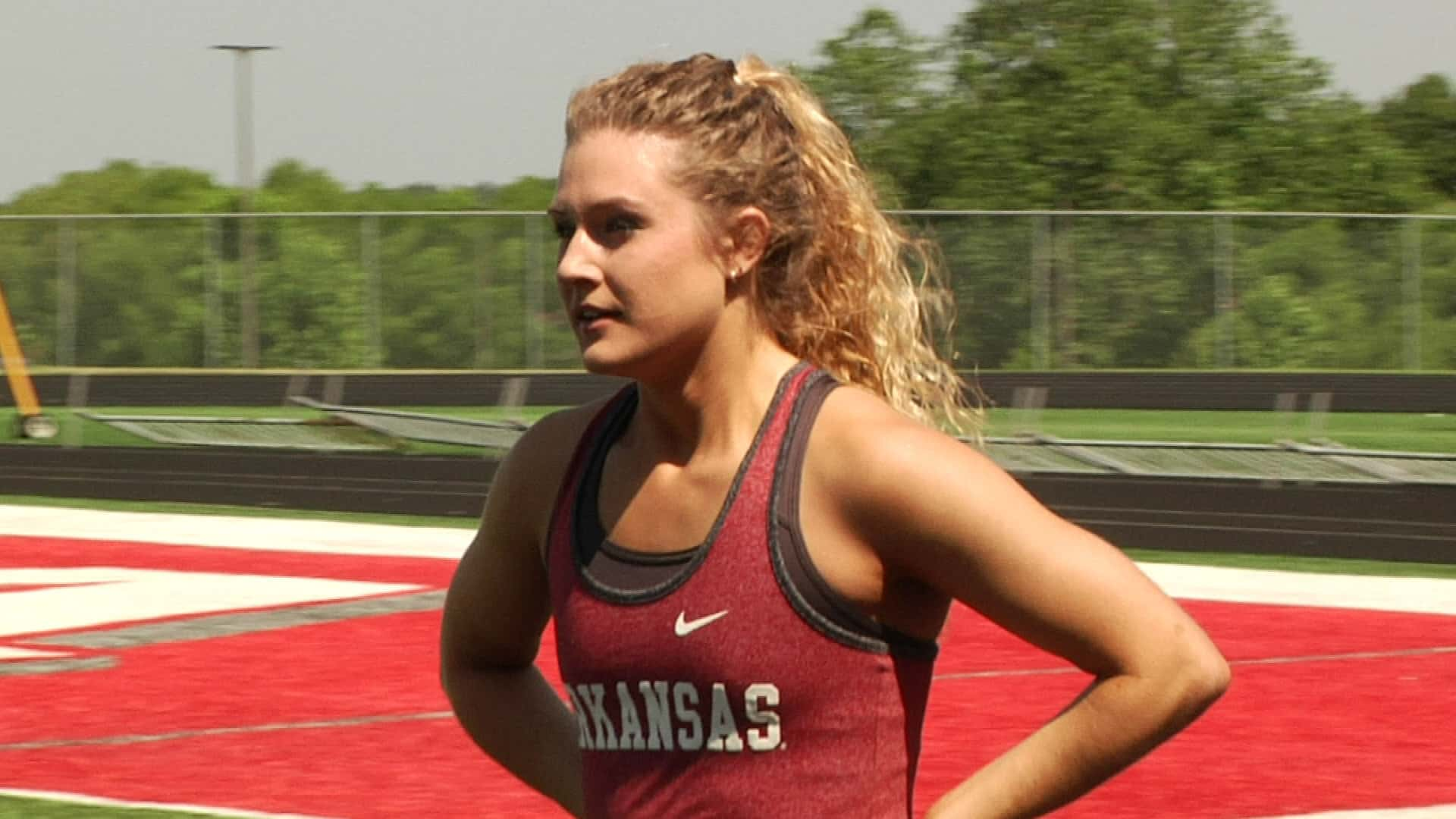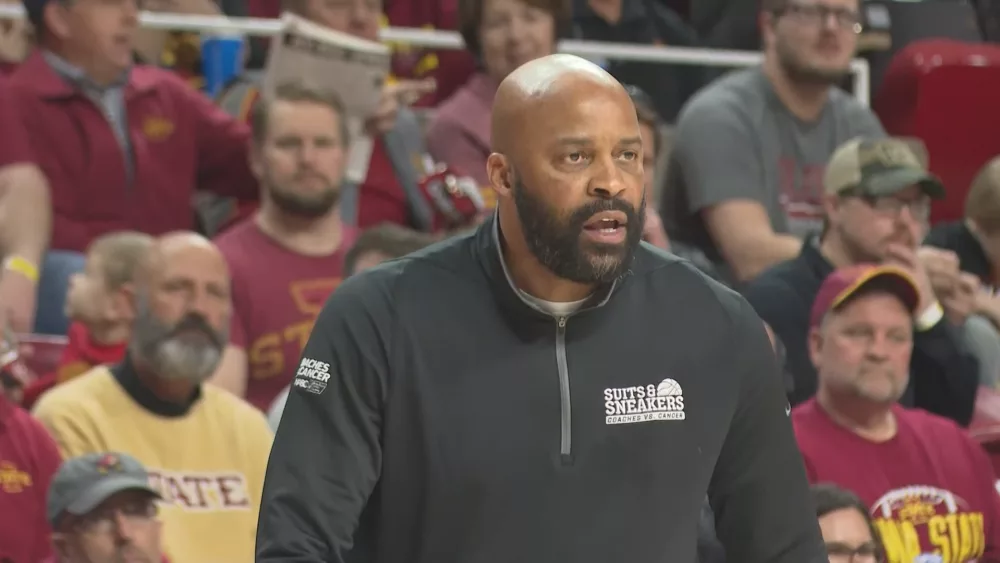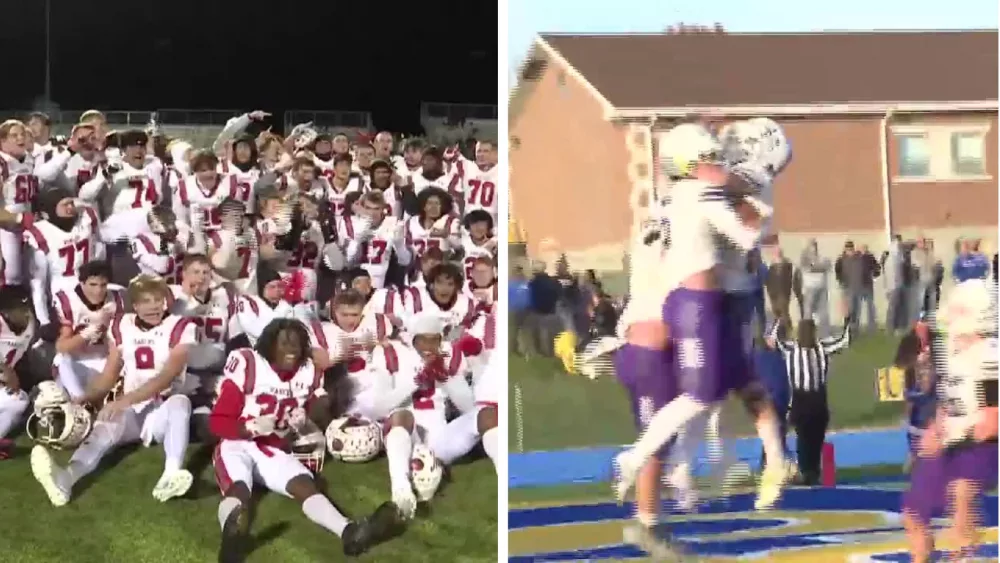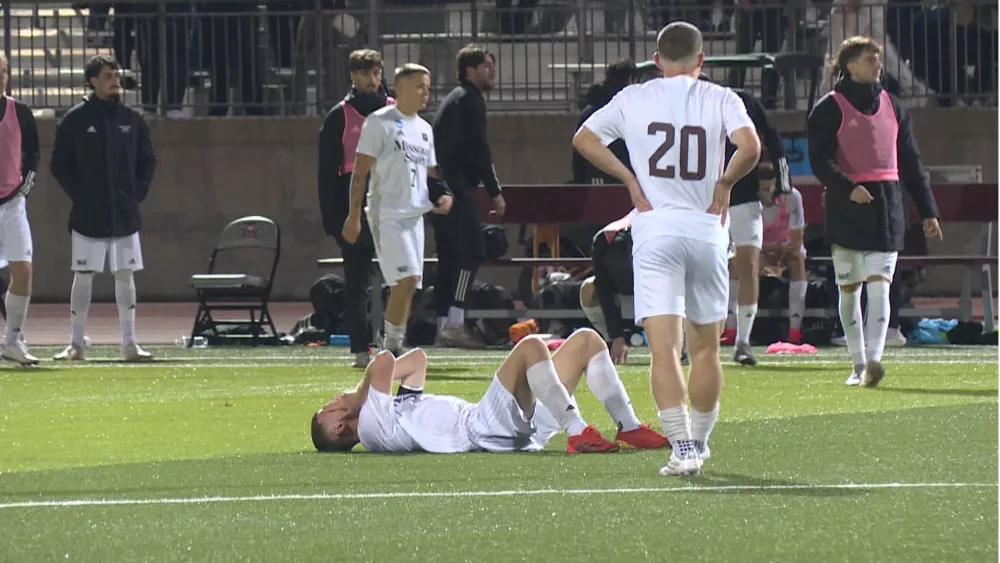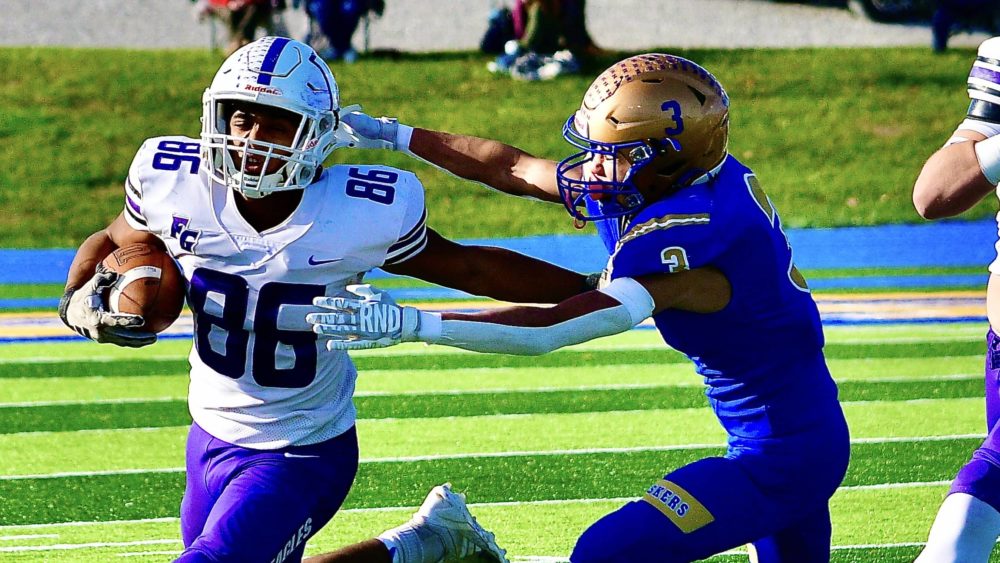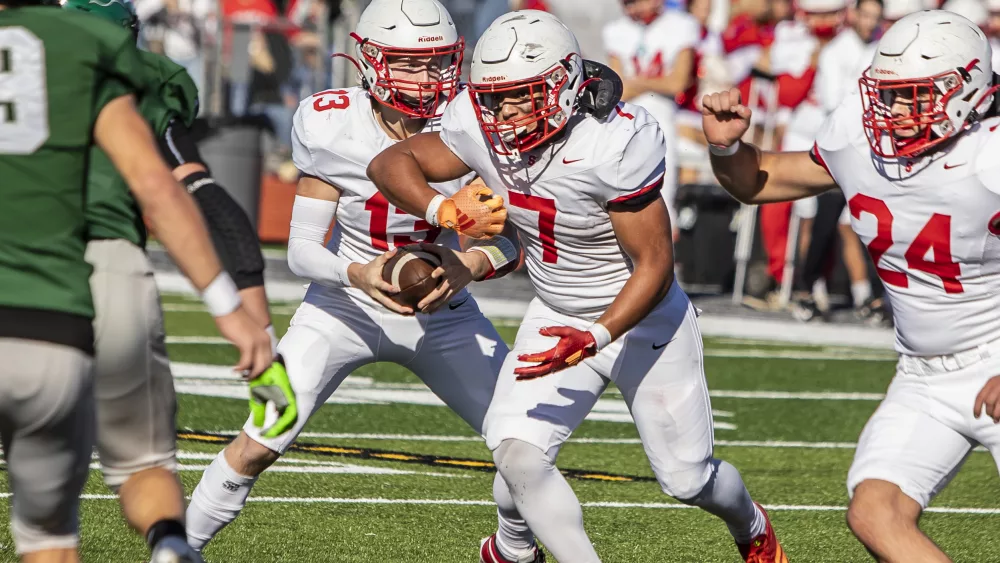NIXA, Mo. — Sydney Hammit can't play kickball, she can't skate and you'll never see her on a trampoline.
If it involves excessive movement on water or snow she's out as well, so no skiing or boarding.
Which, in a family full of athletes, could be an issue.
Stacey Hammit (Baseball-Clark College)
Carrie (White) Hammit (Basketball/Cross Country/Track – Harding)
Brock Hammit (Baseball – High Point)
Brett Hammit (Baseball – Nebraska)
In fact, her day-to-day activities are a constant question of "can I physically do this without hurting myself", which isn't typical for most Division One athletes.
But Sydney Hammit is anything but a typical athlete.
The Come Up
To understand Hammit, you have to understand her first love; basketball.
"I started playing when I was 4 and as I got older I found myself loving the game more and more. I didn't just love playing in games, I loved the practice aspect of it too. When I would go shoot and do ball handling I was filled with happiness! It was just so fun to me!
I could shoot for 3 hours and it feel like 30 minutes! I loved being able to work on a new skill and then master it and get to use it in games! I loved how close you would be with your team and the whole process of working together to win, it was just great!"
Hammit spent her childhood shooting thousands of jumpers throughout the course of her career. That's what happens when you want to be the next Jackie Stiles.
The former Lady Bear great, and all-time leading scorer in NCAA history, graced Hammit's wall for much of her childhood.
That childlike adoration turned into something more when Hammit began taking lessons from Stiles in 2008.
In a community that is basketball crazy, and was coming off state championships in 2000 and 2009, it seemed like Hammit would be a part of the next wave of Nixa talented that included Jeana Raper, Angie Allen and Toshua Leavitt.
"She didn't conduct herself like a 7th grader on the floor," said Nixa coach Jennifer Perryman of the first time she saw Hammit. "She was athletic, but she had a mature, experienced demeanor about her. Her basketball IQ was very high and she was very stoic on the court."
But, a promising career through middle school and junior high never really got going…
THE KNEE VS. THE DREAM
You can't call it bad luck, as it seems to be part of a larger plan, but Hammit's body and her mind were never on the same page when it came to high school basketball.
It almost seems too ridiculous to be true, but in four years Hammit suffered four major knee injuries.
Yes, four in four… to the same knee.
*insert horrified emoji face here*
When Hammit breaks down each individual injury it sounds like an episode of Grey's Anatomy or House with her talking about sutures, platelets, ligaments and why her knee looks like it could have its own horror movie.
Surgery 1- August 2010
ACL reconstruction and meniscus repair
Surgery 2 – March 2012
ACL reconstruction and meniscus repair

Surgery 3 – October 2012
Notchplasty and bone spur removal
Surgery 4 – February 2014
Partial ACL tear, bucket handle meniscus repair and ALL graph
Each injury ending Hammit's season, each injury pulling her further and further away from her basketball dreams.
While she was able to piece together bits and parts of seasons it was never enough to really get any momentum going.
After three years of missing more high school games than she had played, all of her focus shifted towards getting healthy, staying healthy and getting a coaching staff to fall in love with her game enough to make an offer.
Creighton, Arkansas, Wichita State, Drake and Oral Roberts had all expressed interest, but wanted to see what she did her senior year.
Pressure…
"The plan was for me to get healthy and then play our fall circuit. So, my main priority was staying healthy. That summer I would wake up and go do sprints, then shoot and do ball handling for three hours, lift, and then later that day go out and shoot and do ball handling again. I felt like I was extremely prepared for the fall and school season and then I got mono the first day of school.
I had a very severe case and was unable to play the fall circuit and unable to shoot and do all of the things I wanted to do to prepare for school season. So, going into senior season I felt a lot of stress because I that was it. This is the last chance I have to show what I can do."
Despite missing the first month of the season Hammit was able to make an immediate impact for the Lady Eagles, returning just in time to help Nixa beat one of the state's top programs in Crane.
But, just a few weeks after getting cleared…again…Hammit suffered another season-ending knee injury… again.
Oddly enough, the injury occurred on a drive that ended in a pull-up jumper, a move that Hammit had done thousands of times throughout her life.
Many in the gym knew what happened when she went down. She went to the free throw line, shot her two free throws, and left the court at Nixa High School for the final time as a player.
"When she went down the last time I knew it was torn again," said Perryman. "It was in the third quarter of one of our home games right in front of our bench. I had to choke back the tears and tried to be positive for her.
"That was one of the hardest things as a coach because we are control freaks by nature and this was completely out of my hands. She was one of the hardest workers I've ever seen and one of the most competitive kids I've ever seen. When I see kids taking the ability to play for granted I use Sydney as a reference and tell them her story. It's one of those what ifs that you don't want to think about because I honestly think we'd be watching her play big time basketball if it wasn't for these injuries."
A NEW CHAPTER
Most 18 year-olds don't think of the word "retirement" in reference to themselves, but just three months prior to graduating high school Hammit learned that she would never be medically cleared to play basketball, her passion from the age of four, ever again competitively.
In the time that followed Hammit clung to her faith and those close to her to emotionally cope with the loss.
"Even though I had a strong foundation in Christ, when I was told I would never play again I didn't know what I was going to do," said Hammit. "My identity was in Christ, but it was also in basketball which was wrong. I honestly battled depression for a while. I felt like He had given me a talent to play basketball and I wanted to glorify Him through it, so I didn't understand why it was taken away from me. My parents and brothers just kept praying for me and encouraging me to dig deeper into Gods word. I did and found peace in His promises."
"I knew that regardless of what was happening, He had a plan and everything was going to be okay. I realized my worth wasn't in whether I was able to play basketball or not, that it was in Jesus. Regardless whether I played another ball game again or never stepped foot on a court again, my worth in Him would never change. But that was really tough to understand at first."
In God's plan for Hammit came the idea to run track.
One of the few athletic events Hammit did get to compete in was track as a freshman. She was also undefeated as a junior high sprinter.
Medically, track was an option because of the lack of lateral movement. So, following her fourth knee surgery, Hammit got back in the gym for another grueling rehab but with a different goal in mind.
She began contact programs to gauge interest and found it existed based on her potential. Hammit's junior high talent (12.6-100, 25-200, 59-400) was enough to entice the interest of Missouri State and Arkansas.
Ron Boyce, the coach at Missouri State, had a relationship with Hammit from helping her rehab her first surgery and had tried to convince her to give up basketball for track previously. He also encouraged her to try to run track collegiately.
Boyce and the Bears extended an offer, while Arkansas wanted Hammit to come for a visit. And, following her trip to Fayetteville, she fell in love with the university and decided that's where she would attempt her comeback.
As the saying goes, the rest was history.
Hammit spent her freshman year completing her rehab and training (she lost 1/3 of her patella and quad tendon in the 4th surgery) and after more than a full year of not competing, got her chance in 2016 Arkansas Twilight where she ran in the 100M.
“It was so amazing! It was just such a blessing to have the opportunity to compete again because that's something that I was told by a lot of people I would never get to do again,” said Hammit. “It was so exciting just being able to start the process again. You can't look too far ahead with these things, so finally getting to those steps and being able to run and see progress was huge. I am so thankful that Coach (Chris) Johnson and Coach (Lance) Harter helped me get to that point. They're incredible people and coaches. Coming out injury free was such a major relief!”
One day Hammit will have to have a knee replacement surgery and the 20-year old junior to be is already battling arthritis. She’s spent more time wearing a knee brace than most girls her age spend in heels.
But, the opportunity to continue competing, for a cause bigger than herself, is something that is well worth it for Hammit.
"The Lord gave me a passion for basketball and I wanted to work as hard as I could to use that sport to glorify Him. It was extremely difficult to come back all of those times, but I was determined to do it. God gave me the strength and drive to come back each time and my family supported me all the way. I played until my last surgery where they told me that I had to be medically retired. I knew I wanted to be a collegiate athlete, so that's when I decided to switch to track. My surgeon, Dr. Patrick Smith, cleared me to do that so I went for it since I could no longer play ball! I love competition and I love worshipping Jesus through sport so it’s worth it.”
She says her scars show triumphs over trials, something that she almost wears as a badge of courage. Her story, while rare, is unlikely to be forgotten any time soon.
Or at least as long as Coach Perryman is still around.
“I don't think there is a better example than hers of toughness, perseverance, and always giving it everything you have cause you never know when it could end,” said Perryman. “I’ll always use her as an example for my kids.”
Atypical.

